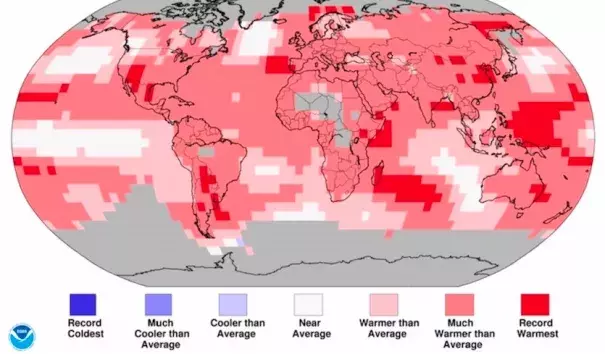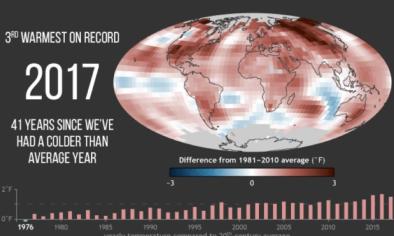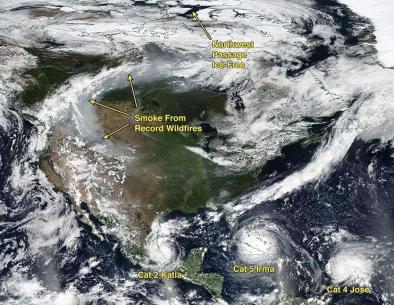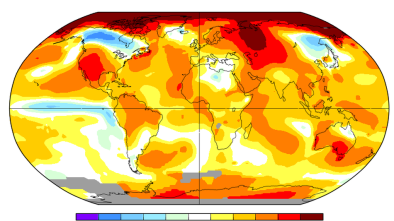NOAA: Earth Had Its Third Warmest Year on Record in 2017

In 2017, Earth experienced its third warmest surface temperature in records going back to 1880—and its warmest year on record without an El Niño event—according to NOAA. El Niño tends to increase global air temperature by transferring heat from the ocean into the atmosphere, which helped push global readings to record levels in 2015 and 2016. However, there was no El Niño in 2017.
In its annual climate summary released on Thursday, NOAA’s National Centers for Environmental Information (NCEI) calculated that the average global temperature across both land and ocean surfaces for 2017 was 1.51°F (0.84°C) above the 20th-century average of 13.9°C (57.0°F). This made 2017 the third warmest calendar year on record, coming in 0.18°F (0.10°C) below the record set in 2016.
Using a slightly different technique, the Japan Meteorological Agency also found that 2017 was the third warmest year in this 137-year period. Update: NASA data published at midday Thursday ranked 2017 as the second warmest year on record, behind 2016 but just ahead of 2015. Small differences in analysis technique can lead to slightly different rankings in the results from these three agencies. NASA's technique incorporates more of the Arctic, which was extremely warm in 2017.
Related Content






